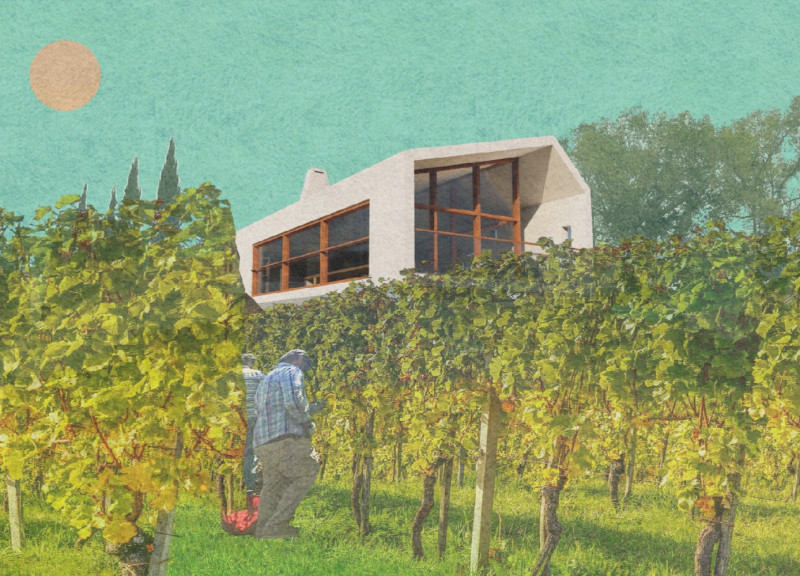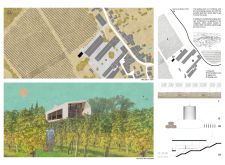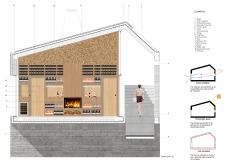5 key facts about this project
Quinta do Monte d'Oiro introduces a thoughtful approach to wine tourism in the heart of Portugal. Set in a picturesque vineyard, the tasting room acts as a focal point for visitors to experience both the process of winemaking and the surrounding landscape. Its design emphasizes ongoing interaction with nature and the wine culture, creating a space that is both functional and inviting.
Spatial Organization
The layout carefully divides different areas within the facility. A service area is separated from the main tasting room by an equipped wall, which helps maintain an organized workflow. This arrangement guides visitors as they move through the space, ensuring a smooth experience. A large communal table at the center of the tasting room encourages guests to gather and interact, promoting a sense of connection.
Topographical Response
The site features a six-meter elevation change that separates the vineyards from the winery. The design skillfully addresses this difference in height, allowing the building to relate closely to its surroundings. This connection invites visitors to engage with both the architecture and the landscape, enhancing their connection to the process of winemaking.
Sustainability Features
Sustainability plays an important role in the design choices made for the tasting room. Photovoltaic panels provide the energy needed for operations, indicating a focus on reducing environmental impact. Additionally, cork insulation is used to improve energy efficiency. These elements reflect a commitment to creating a sustainable space that respects both the landscape and the resources it uses.
Environmental Control
Windows are positioned to allow for cross-ventilation, bringing fresh air into the tasting room. This design feature helps maintain a comfortable environment, reducing the need for mechanical cooling or heating systems. With a focus on natural airflow, the room offers a pleasant experience for visitors, particularly during busy periods in the tourist season.
The architectural design draws from traditional rural styles, connecting naturally with its environment. It guides visitors through a landscape that is both captivating and educational, creating an engaging atmosphere that highlights the connection between the wine and its origins.






















































